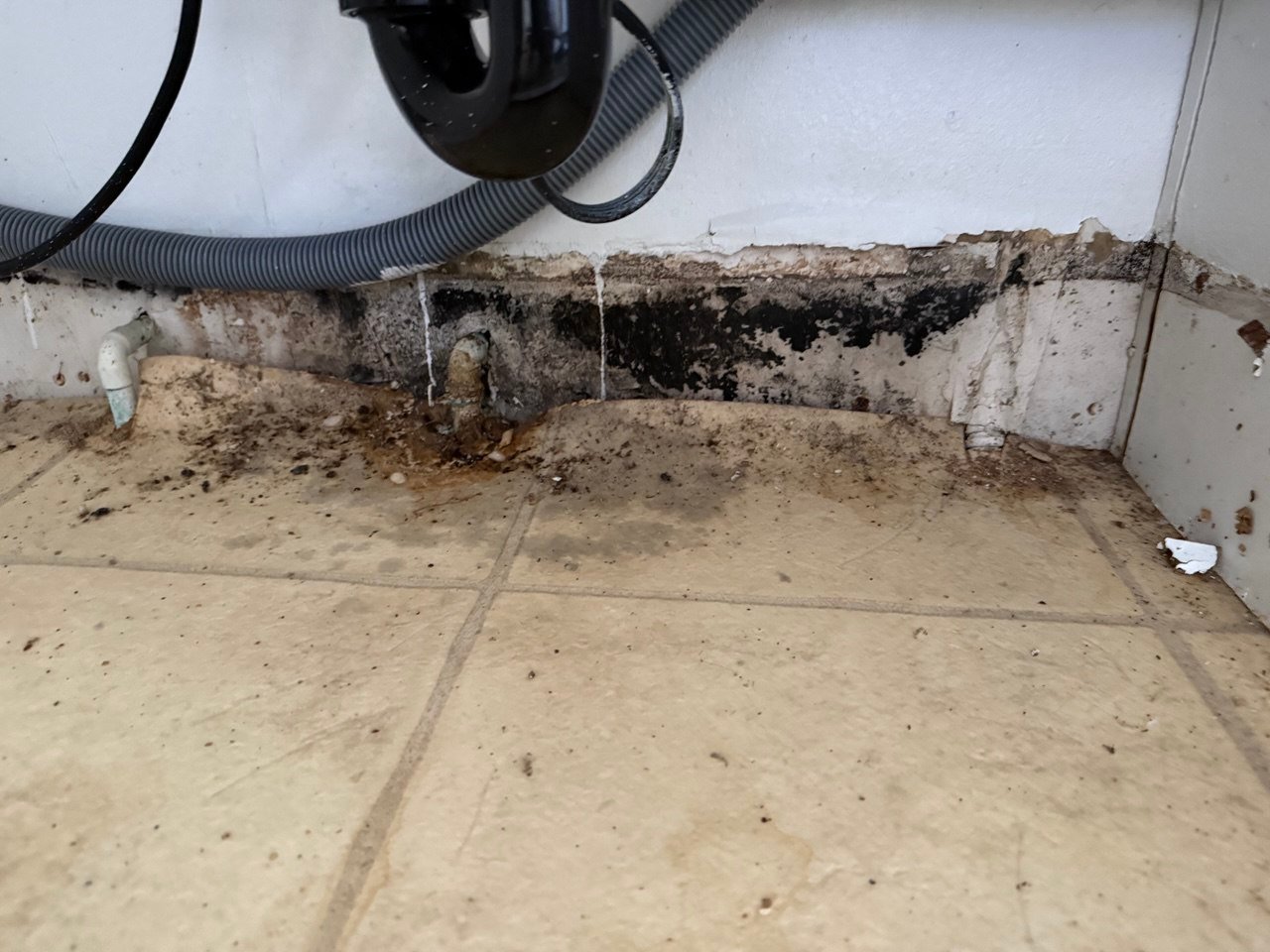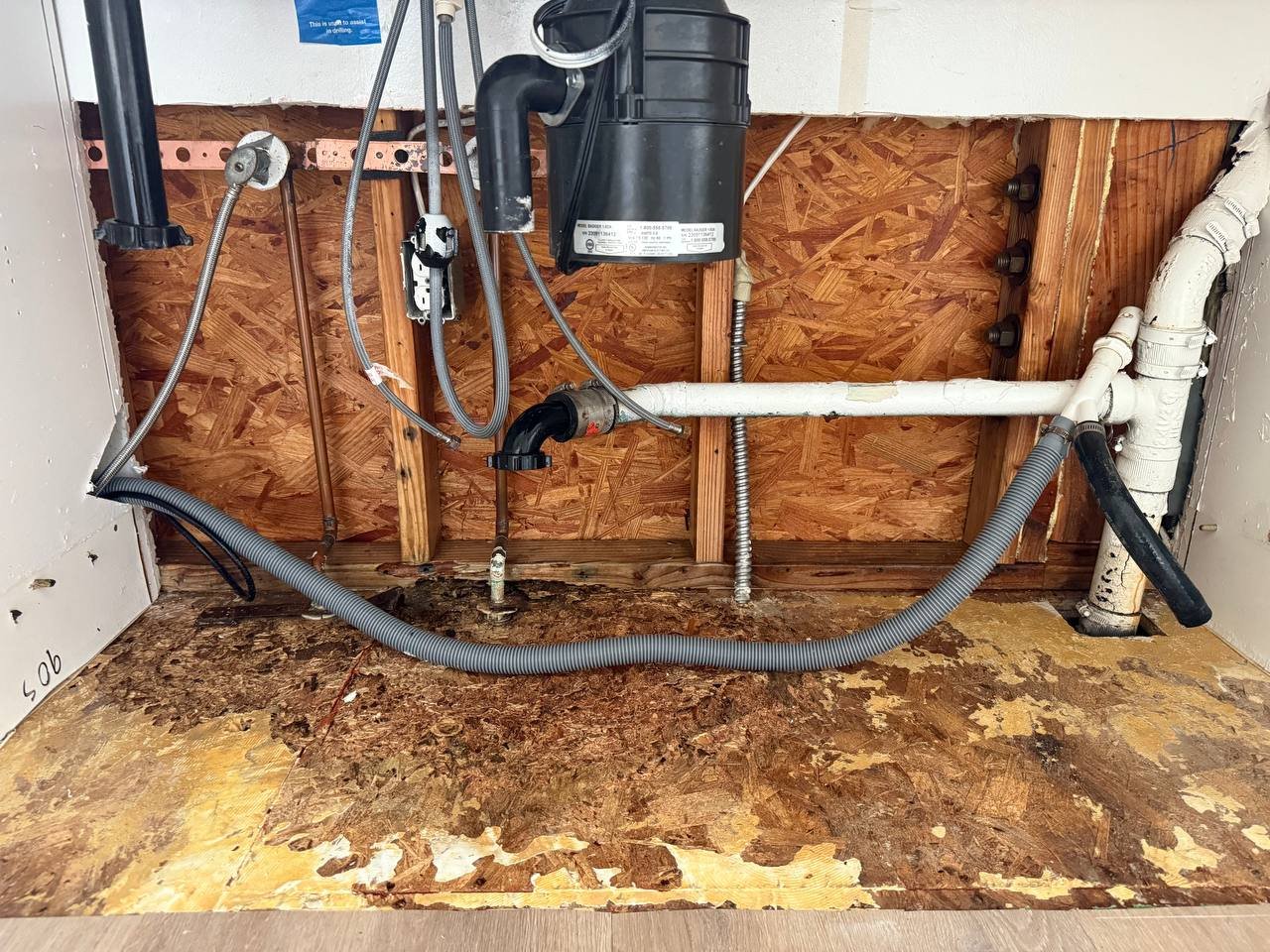Mold Remediation in Palmdale, CA | Inspection, Removal, Prevention
Palmdale’s high-desert climate is dry, but indoor mold still appears after roof leaks, swamp cooler overflows, stucco cracks, and irrigation overspray against exterior walls. Older plumbing, flat roofs, and tight utility closets allow moisture to linger inside assemblies long after rain passes. Onsite Pro Restoration provides certified inspections, safe mold removal, and prevention steps designed for Palmdale homes, townhomes, and apartments.
Get Started
Service Form
Signs You May Need Mold Remediation
Musty Odor, Spots, or Recurring Stains
A persistent musty smell, speckled patches on drywall or ceilings, or stains that reappear after cleaning signal ongoing moisture in walls or ceiling cavities.
Symptoms That Improve Outdoors
If coughing, sneezing, or eye irritation is worse at home but improves outside, hidden moisture and mold may be present inside the building envelope.
After Leaks, Storms, or Cooler Issues
Monsoon bursts and winter rains drive water under flashing. Evaporative coolers overflow pans or leak at lines, wetting insulation and drywall. Any porous material left damp for 24 to 48 hours can support growth.

Why Mold Happens In Palmdale Homes
Evaporative or Swamp Cooler Leaks
Roof and attic coolers are common in Palmdale. Cracked pans, clogged drains, or supply-line failures release water into insulation and ceiling cavities. We often see this in neighborhoods around Rancho Vista and east of 10th Street West.
Stucco Micro-Cracks and Window Intrusions
High winds push rain into hairline stucco cracks and around older window assemblies. Water bypasses paper, wets sheathing, and shows up later as interior staining.
Plumbing and Utility Closets
Angle stops and supply lines inside kitchen and laundry closets drip out of sight. Tight spaces trap humidity. Slow leaks often cause recurring odor in base cabinets and toe-kicks.
Irrigation and Grading
Sprinklers that hit stucco and negative grading near the foundation drive moisture into lower walls. This is common along side yards and planter beds.

Our IICRC S520 Mold Remediation Process
Inspection and Moisture Mapping
We identify the source, then map wet materials using pin and pinless moisture meters and thermal imaging. When sampling adds value for scope, compliance, lenders, or clearance, we will advise the right type and the correct timing.
Source Control
Mold returns if the water source remains. We coordinate plumbing repairs, roof or stucco sealing, swamp cooler service, or ventilation fixes before or during remediation, depending on the situation.
Containment and Negative Pressure
We build poly containments with zipper access and run HEPA-filtered negative air to keep spores and dust from migrating. HVAC supplies and returns in the work zone are sealed. Floors and hallways are protected to keep clean areas clean.
Removal of Contaminated Materials
Porous materials with established growth are removed. That usually includes colonized drywall, carpet pad, and wet insulation. Framing is exposed where needed for cleaning and drying.
HEPA Cleaning and Detail Work
We HEPA vacuum surfaces, mechanically agitate where required, and perform detail cleaning. Targeted antimicrobial is applied to support cleaning. It never replaces source removal.
Controlled Drying
Dehumidifiers and air movers reduce vapor pressure and bring materials to target moisture. We log baseline and daily readings and do not close the job until targets are met.
Post-Remediation Verification (as needed)
For larger projects, HOA rules, or sensitive occupants, a third-party assessor can perform PRV. Passing typically includes visual clearance, odor-free conditions, balanced air handling, and project-appropriate sampling.
Documentation and Handover
You receive photos, moisture logs, and a line-item scope formatted in Xactimate. This reduces adjuster pushback and protects you for future disclosures or tenant questions.
Common Palmdale Scenarios We Handle
Swamp Cooler Pan Overflow in West Palmdale
A cracked pan released water into attic insulation above a hallway and living room. We removed contaminated insulation, opened limited ceiling sections, cleaned framing, dried to targets, and coordinated cooler repair. The home passed clearance and was rebuilt the next week.
Stucco and Window Intrusions Near Avenue S
Wind-driven rain entered through stucco cracks and aging window seals. Interior staining appeared months later. We removed colonized drywall along the lower wall, cleaned and dried sheathing and studs, then recommended exterior crack repair and window flashing upgrades.
Laundry Closet Leaks in East Palmdale
A slow drip at the washer supply corroded valves and wet surrounding drywall. We contained the closet, removed damaged materials, cleaned, dried, and replaced valves with braided lines to reduce future risk.
Why Choose Onsite Pro in Palmdale
Local Experience
We work across Palmdale, Rancho Vista, Anaverde, Joshua Hills, and the Antelope Valley. Crews know roof assemblies, cooler configurations, and tract-home framing common to the area.
Certified and Measured
IICRC S520 methods, instrument-verified moisture targets, and step-by-step documentation. No early closures that lead to odor or recurrence.
Insurance-Ready
Adjuster-friendly Xactimate estimates, photo sets, moisture logs, and PRV reports when used. We communicate scope directly with insurers to reduce delays.
Cost Factors in Mold Remediation (Typical Ranges, Not a Quote)
Actual costs vary by size, materials, access, and verification requirements. These ballparks help planning:
Containment and protection: 150 to 600 dollars per chamber depending on size and complexity.
Selective demolition: drywall removal and haul-off 2.50 to 5.50 dollars per square foot; wet insulation removal 1.50 to 3.50 dollars per square foot; toe-kick or baseboard remove and replace 6 to 12 dollars per linear foot.
HEPA negative air: 95 to 165 dollars per day per machine.
Air movers and dehumidifiers: 25 to 45 and 75 to 125 dollars per day, respectively.
Detail cleaning and antimicrobial: 0.20 to 0.50 dollars per square foot of treated surfaces.
PRV by third party (if requested): priced separately by the assessor and lab.
Many policies limit mold coverage but may support the water loss that caused it. We document the water event and the resulting damage to help maximize coverage under your policy terms.
Prevention After Remediation
Service swamp coolers before summer. Inspect pans, drains, and supply lines.
Seal stucco cracks, maintain window flashing, and clear roof drains and scuppers before storms.
Replace aging supply lines and angle stops. Add leak alarms under sinks, washers, and water heaters.
Vent bathrooms and laundry to the exterior. Improve airflow with timers or humidity-sensing switches.
Keep indoor relative humidity near 40 to 50 percent.
Adjust irrigation to avoid spraying stucco. Maintain positive grading away from the foundation.
After any leak, verify materials have reached target moisture before closing walls.
Timeline
Inspection and scope: same day.
Containment, removal, initial cleaning: 1 to 2 days for a small bathroom or laundry wall, longer for multiple rooms or attics.
Drying and PRV: usually 2 to 4 additional days depending on materials and indoor humidity.
Rebuild: after targets are met and, if used, PRV passes. Typical scopes include drywall, insulation, paint, and trim.
Links to More Restoration Services in Palmdale
Palmdale Water Damage Cleanup
Fast water extraction and drying.
Palmdale Fire Damage Restoration
Smoke and fire damage cleanup.
Palmdale Sewer Damage Cleanup
Biohazard and sewage cleanup.
Palmdale Hub Page
Explore all restoration services in Palmdale.
